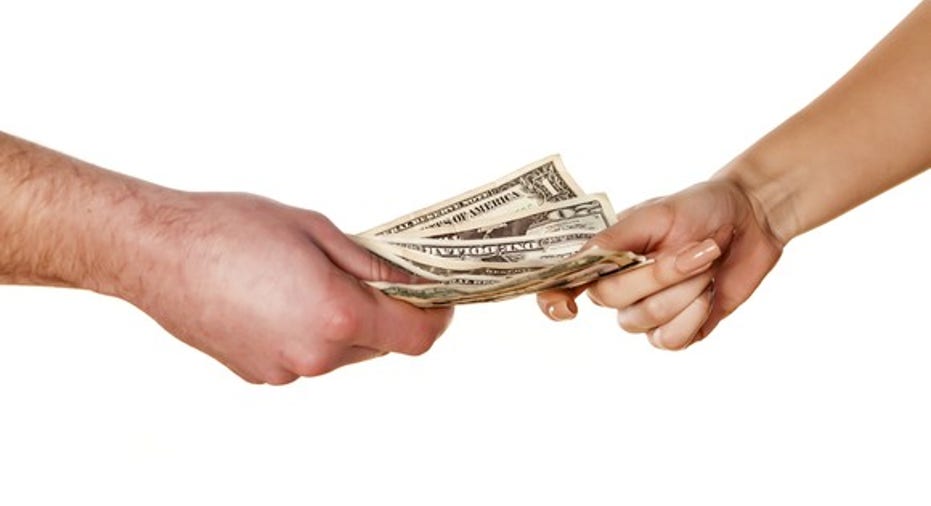These Moves Could Save You Thousands in 2017

While there are lots of ways to save money, some are more practical than others.
For example, doing all of your shopping at a dollar store might cut your budget, but it's likely to lead to a year full of nutritional deficiencies, bizarre outfits, and less-than-effective personal hygiene products. In addition, it's also possible to save money by going without things you like -- the traditional examples are giving up your morning latte or eating lunch out -- but sacrificing those things comes with a certain amount of pain.
The three examples below could save you thousands if you try at least two of them. It's not that these ideas don't require discipline and giving up things you enjoy, but for many people, they are not major struggles.
You can hold onto more of your money by making some simple changes. Image source: Getty Images.
Cut the cord with cable
In 2015, my Fool colleague Jamal Carnette wrote an article citing data from NPD Group estimating that the average American pays $123 a month for cable. Other data puts the numbers at closer to $100, so in the interest of fairness, we'll use a number roughly in the middle -- $111 -- as what people would save were they to drop cable. In addition, we'll assume that most people lose $5 in bundling savings should they drop pay TV but keep broadband internet.
Since dropping cable and replacing it with nothing would be a major sacrifice, let's assume the average person replaced traditional pay TV with either Netflix (NASDAQ: NFLX)($9.99 a month) and Hulu ($7.99 monthly) or DISH Network's (NASDAQ: DISH) Sling TV live-TV streaming service ($20 a month).
That means the average person would save $1,332 a year, but pay $60 in lost-bundling charges and either $215.76 (for Netflix and Hulu) or $240 for DISH's Sling. That would mean an annual savings of either $1056.24 (for Netlfix/Hulu) or $1032 (Sling). Even someone opting for both streaming services and DISH's product would still save $816.24 a year.
Hold onto your car
Many people use the occasion of paying off their car loan as a justification to trade in their vehicle and take on new debt. It's easy to see why people do that. Once they have become comfortable with a monthly payment, it's easy to rationalize simply keeping that expenditure up while upgrading to a new vehicle.
If you have a reliable car that's not breaking down, just waiting one extra year can be a significant savings. Of course, how much you save depends upon how big your car payment was in the first place, but even $100 in payments not made each month results in $1,200 in savings. In addition, keeping an older car on the road generally comes with cheaper insurance costs.
There's certainly a point where maintenance concerns make upgrading your vehicle a smart choice, but generally -- unless you ride your vehicle especially hard -- that's not a big issue in the year or two after a three, four, or even five-year car loan.
Get the right rewards card (but be careful)
In the past year, we've seen the credit card companies and a number of retailers ramp up their cash-back offers. For a consumer who pays his or her bill off each month, getting a rewards card and using it extensively can bring significant cash back.
For example, Amazon (NASDAQ: AMZN) recently upgraded its rewards credits card to offer Prime members 5% back on all Amazon.com purchases as well as 2% back at restaurants, gas stations, and drugstores, and 1% back on every other purchase. Those cashback offers come in the form of credits with the online retailer, not actual cash.
For a devoted shopper of the online retailer, just buying $1,000 a month at Amazon.com (not hard to do if you buy household staples there) means $50 a month in credit back, or $600 a year. Spending $150 each month on gas equals another $36 annually, and it's easy to see how the giveback could snowball from there.
Amazon is not alone in this offer; there are a handful of rewards cards offering similar deals -- in some cases with straight cash back. These offers can vary greatly -- and the benefits are not worth it if you carry a balance -- but for responsible users, these perks can bring back thousands in annual savings or cash back.
Find out why Netflix is one of the 10 best stocks to buy nowMotley Fool co-founders Tom and David Gardner have spent more than a decade beating the market. (In fact, the newsletter they run, Motley Fool Stock Advisor, has tripled the market!*)
Tom and David just revealed their ten top stock picks for investors to buy right now. Netflix is on the list -- but there are nine others you may be overlooking.
Click here to get access to the full list!
*Stock Advisor returns as of January 4, 2017.
Daniel Kline has no position in any stocks mentioned. He does not always follow his own advice. The Motley Fool owns shares of and recommends Amazon.com and Netflix. The Motley Fool has a disclosure policy.